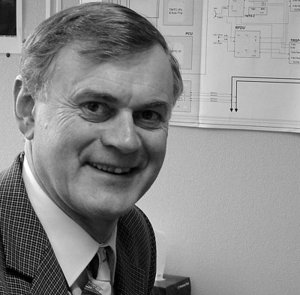The pleasure principle: An interview with Colin Pillinger
Colin Pillinger could be counted among the hardest-working people in space science today, having toiled ceaselessly over the last six years to get Beagle 2 to this point – now just days away from its destination. Yet he takes immense pleasure from his job… and would recommend it to anybody.

Colin Pillinger
Head of Planetary and Space Sciences, Open University, UK
Principal Investigator, Beagle 2, Mars Express
Born: 9 May 1943 in Bristol, England
Colin gained his PhD from the University of Swansea, Wales, in the late Sixties, and became one of the lucky few Britons to work on the lunar samples brought back by the Apollo 11 Moon landing mission. Later, at Cambridge and the Open University, he developed techniques for classifying meteorites according to their chemical composition, and has worked on a NASA mission to collect a sample of the 'solar wind', and ESA missions to investigate how meteorites erode in space.
Colin is married and has two children. He lives on a small farm in Cambridgeshire, where his various livestock keep him busy out of working hours.
Beagle 2’s design is the best possible one for finding the indicators for life on Mars.
ESA: How do you feel as Mars Express gets so close to its final destination?
Colin Pillinger
I have not had time to think about it at all! I like to keep myself busy, and I certainly am at the moment! When I used to play football, I was the type who would just turn up and play – you wouldn’t find me fretting in the changing room before the match.
ESA: What most fascinates you about Mars?
Colin Pillinger
I share the same fascination as many people: that Mars is the most likely planet to support life. I think it is great that I have been able to take part in that investigation, and fully believe that Beagle 2’s design is the best possible one for finding the indicators for life on Mars.
I don’t really count what I do as a job. I don’t think of myself going to work, as it is so enjoyable.
ESA: What is your greatest hope for Beagle 2?
Colin Pillinger
I don’t really have any hopes for the answers that we might find. I just hope that we have chosen the right experiments to find those answers. We have 20 years of information and understanding from other missions that we have drawn on to discover the simplest tests to find the indicators for life, so I am feeling confident.
ESA: What drives you in your job?
Colin Pillinger
I don’t really count what I do as a job. I don’t think of myself going to work – in the mornings I say, “I’m going to the lab,” - which means that I am thoroughly enjoying myself. I don’t think you have to be driven to do research, as it is so enjoyable.
I used to read Dan Dare comics and listen to ‘Journey into Space’
ESA: How did you first become interested in space science?
Colin Pillinger
Like many kids, I used to read Dan Dare comics and listen to ‘Journey into Space’ on the radio. And I would draw rockets, which, of course, bore no resemblance to how they are now. It was a big surprise when I first saw that spacecraft didn’t have a point at the top and fins at the bottom!
The training you get will stand you in good stead..., whether you end up as a bricklayer or a barrister!
ESA: What advice would you give somebody who wanted to work in space research?
Colin Pillinger
DO IT! It is absolutely phenomenal training for anybody, even if they never get involved in another space mission in their lives. The training you get, and the thought processes you develop, will stand you in good stead whatever you do in later life, whether you end up as a bricklayer or a barrister!















 Germany
Germany
 Austria
Austria
 Belgium
Belgium
 Denmark
Denmark
 Spain
Spain
 Estonia
Estonia
 Finland
Finland
 France
France
 Greece
Greece
 Hungary
Hungary
 Ireland
Ireland
 Italy
Italy
 Luxembourg
Luxembourg
 Norway
Norway
 The Netherlands
The Netherlands
 Poland
Poland
 Portugal
Portugal
 Czechia
Czechia
 Romania
Romania
 United Kingdom
United Kingdom
 Slovenia
Slovenia
 Sweden
Sweden
 Switzerland
Switzerland

































